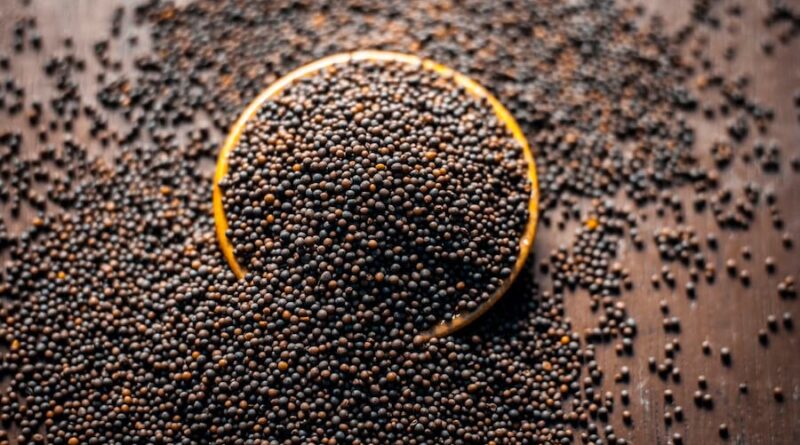Mustard adds spice to Karnataka rice bowl in rabi season
By Vittal Shastri
Mustard, grown mainly in north and eastern India, has entered Karnataka in a big way with paddy farmers in the Tungabhadra command area cultivating it as the second crop (rabi crop). According to agriculture department data, the edible oil crop is now grown on around 7,000 hectares in Koppal district and has penetrated Raichur and Ballari districts as well.
Farmers opted for this crop as they did not get water from the reservoir to grow a second paddy crop following monsoon failure last year. Dam water was not released for the rabi season for only the second time in the last decade.
While the total area under paddy cultivation is around 49,000 hectares in Koppal district, paddy is grown only on 7,000 hectares in the rabi season with borewell water. Tungabhadra reservoir has a total command area of 9.26 lakh acres in four districts of Koppal, Raichur, Ballari and Vijayanagar districts.
Farmers get two to three quintals of mustard per acre and the prevailing rate in the market is around Rs 8,000 a quintal. The average expenditure is Rs 3,000 an acre for seeds and pesticides. Profits from mustard are expected to be slightly higher than paddy, which yields a profit margin of Rs 15,000-Rs 20,000 an acre.
“We had grown mustard four years ago on an experimental basis when officials did not release water from Tungabhadra dam during the rabi season,” said Karatagi Ramanna, who has cultivated the crop on seven acres instead of paddy this year. “We are expecting Rs 60,000-Rs 70,000 if the yield is good,” he said.
He expects this revenue to help him meet the expenditure on cultivating the next paddy crop (khariff season paddy).
Koppal Agriculture Department joint director Rudreshappa said mustard is a 60-70 day duration crop. Pointing out that mustard is a major crop among non-paddy crops grown this time during the rabi season, he said it is easy to sow as farmers just sprinkle the seeds on the residue moisture in their farmland.
“We had conducted a demonstration with NRCHB-101 variety of mustard seeds from Bharatpur in Rajasthan a few years ago to create awareness among farmers when water is not released from the dam in the rabi season. Farmers usually grow dhaincha, local crop pille pesaru and sunhemp during such distress periods to increase the fertility of land and to use it as cattle fodder. Now, more farmers are opting for mustard to earn profits as it also easy to manage,” said Gangavati Krishi Vigyan Kendra head and senior scientist Raghavendra Yaligar, who is also the director of Rapeseed and Mustard Research.
Farmers and agriculture department officials say the harvest will be sold in local markets now as the production is still low. However, experts say farmers, scientists and officials should closely observe how mustard cultivation evolves over the years. If it expands to larger areas, then new strategies for crop management and bigger markets will be required, they say.
This article has been republished from the Deccan Herald.

